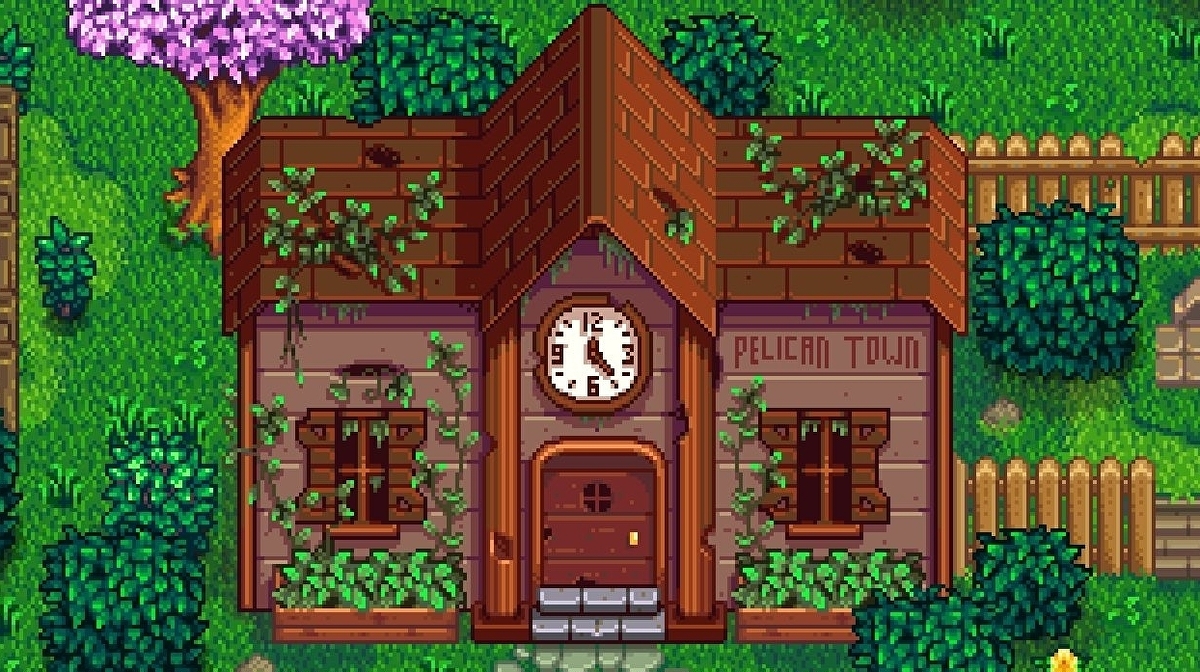Time, like any other resource in Stardew Valley, has to be managed. The strict limits on active hours, crop growth periods, and amounts of resources and gifts to be given or taken on any day is a formative “rule” of gameplay, and is for the most part inescapable. However, as I sat down with two of my peers to share a character and single set of Joy-Cons in a our class collaborative session, something became quickly apparent: Those 18 hours we had in each day were not quite the same as those I thought I knew.
Each day began with a reorientation to the button set on the Joy-Cons, as all three of us had learned the game on PC. During that period, which could take up to half an hour in-game, we discussed our goals for the day and began running around the map to locate our objectives. Sometimes we would take another in-game hour to water the communal crops planted by the three other players inhabiting the world. Sometimes we did not. Our varying levels of familiarity with the town layout sunk more precious minutes into navigating to different areas through both trial-and-error and orated commands. Quests that were taken on one day were quickly forgotten by the next as the controllers transitioned from person to person.
We didn’t interact with any NPC townsfolk or observe their hourly walking patterns to gain their affection. We progressively worked through our basic set of goals — gathering community center items — with little consideration towards the passage of time aside from the seasonal limitation of our foraging expeditions. And in our time outside of the game, we chatted amicably about both game-related and tangential topics. The only instances where time became a pressing concern was when the controllers had to be rapidly exchanged between players to ensure the character’s health: Either returning home quickly before the 2:00am deadline, or fighting off monsters before our health was depleted. Despite this flippancy towards pacing, when a fixed cutscene began and we had to sit through minutes of dialogue, we groaned and button-mashed until we regained control.
One could consider this constant leakage of efficiency as measured by in-game time frustrating, or even detracting to the overall experience of the game. Despite the difficulty I faced remembering which of the Joy-Con buttons I had to press to choose and swing my sword rather than cast my fishing rod, I found that this form of collaborative gameplay brought a new and valuable dimension to my Stardew Valley experience: The fusion of real-time and in-game time as a deprioritization of labor-value and a prioritization of interpersonal fun. This experience was likely unique to our play experience of Stardew Valley collaborative as a game of three people sharing one controller as opposed to three individual players building a farm together by independently achieving their goals.
When playing Stardew Valley by myself, my fixation on the progression of time made it incredibly easy to become immersed in the day-to-day routines of the game: Crops needed watering, chickens needed feeding, the quest I took on the day before pressured me to completing it and taking on the next. However, this immersion became oddly taxing: I’d find myself wanting to stop playing after going to bed at the end of the day, tired of keeping track of my numerous goals, only to become nervous I’d forget those goals upon my next session, and start up the next day to complete them. Each hour kept me locked in an orderly, efficient cycle — one that was rewarding, and one that I valued my progress in, but one that ultimately felt like work. I was the only individual in town who needed to buy seeds at 8am and fretted uselessly until 9, I was the only one who could brave the caves and kill the slimes within 2 days to receive a handful of gold.
Co-op play was, in comparison, undeniably a social event, and a liberating one: daily responsibilities were minimalized, time was used towards tasks that would benefit a group (and not completed for solely personal gain), and I was obligated to take breaks, abandon work, and talk with my peers. The feeling of finding a flower you were looking for, and hearing a cheer as you place it within the community center, that day-long expedition brought me a much different joy than the satisfaction of cutting 5 seconds off my route from the farm to the mines. Apparent skill level, and its corresponding optimizations of time, wasn’t the peak of the experience, fun was. It wasn’t a mindless fun, though: It was still a fun of satisfaction, of a task completed and an objective reached. However, the task was decided upon and the objective was reached communally, with banter and distractions throughout. The constant pressure to achieve, to earn, to self-make, was alleviated, but the satisfaction remained.
Ultimately, this was my personal experience with a very unique type of collaborative play, one that was undoubtedly informed by the way I was first tasked with playing Stardew Valley: as a timed assignment for class. Though this method may have lost its luster had we continued playing another hour, or actually taken on a task larger that gathering basic resources, it provided me with an entirely new approach to playing Stardew Valley, one that likened back to the cozy farming utopia I had originally imagined. It even provided me with something debatably even more valuable: A new bond with my classmates over some scavenged horseradish. Now that’s a good time.
– Daisy Marshall, February 11th, 2022
header image via eurogamer.net
